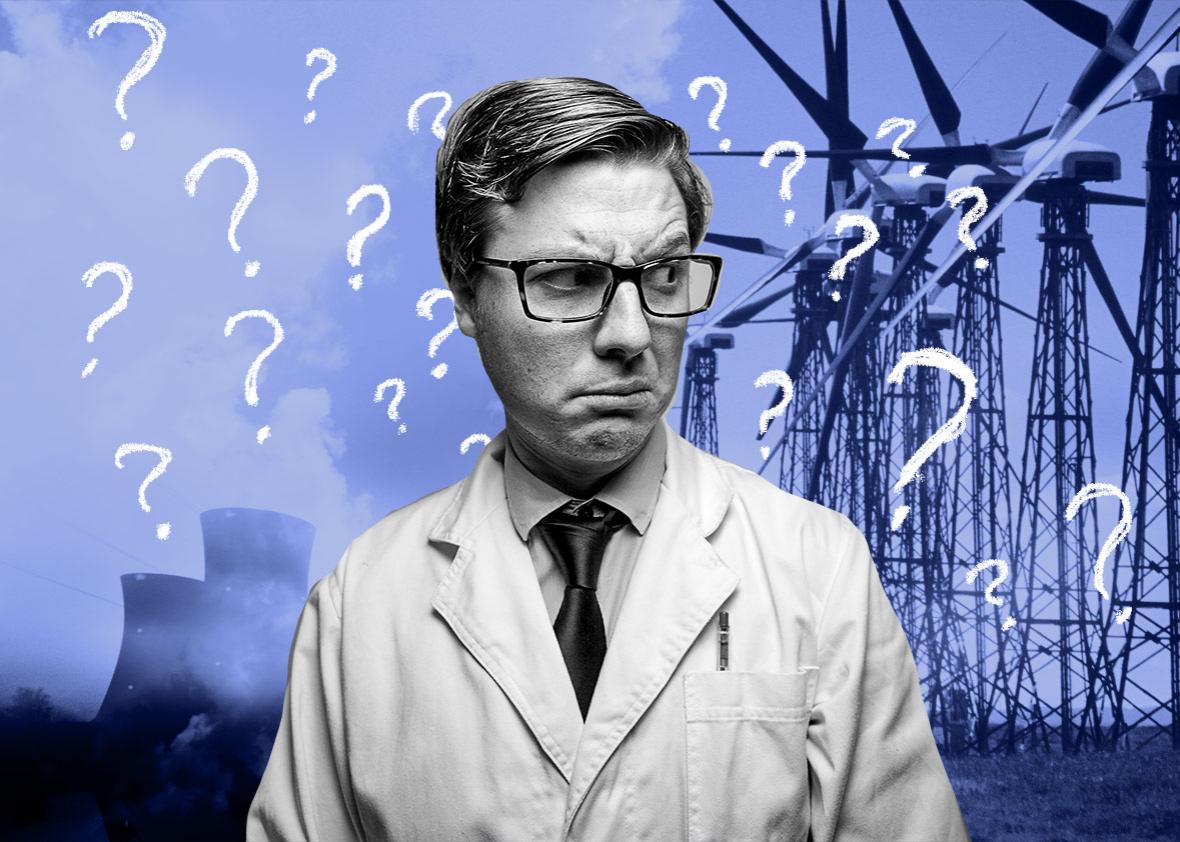In his ongoing quest to dismantle his predecessor’s signature achievements, President Trump is threatening to repeal the Clean Power Plan. On its face, the news is discouraging: The law’s state-by-state carbon emissions guidelines and strict regulations on coal-fired power plants were on track to have a huge impact. By 2030, the bill’s guidelines would reduce greenhouse gas emissions from the utility sector to below 2005 levels, which would have enabled America to meet its commitments to lowering carbon dioxide emissions made in the Paris climate accord. Losing it would seem to be an enormous blow.
But the panic seems to be premature. Many states, including California, home to nearly 40 million power-consuming people, are on track to exceed their emissions goals with or without the bill’s help. The bill would have hastened changes in states that are more reluctant, but the U.S. is, according to the most recent numbers, still on track to meet the emissions goals the bill set forth. That’s because cities and states have a large amount of autonomy to fight climate change on their own. In the wake of Trump’s election, many local and state governments have taken the power (excuse the pun) into their own hands. There has been a burst of mass movements—from the coalition of states pledging that they’re “still in” the Paris Agreement to the cities resolving to run on 100 percent renewable energy—to make sure they’re providing clean energy to their residents.
Unfortunately, this patchwork of pledges and coalitions highlights one of the most basic issues with the pursuit of “clean power” as a policy goal—we have no real, common definition of what “clean” actually means in this context. Calling a power source “clean” is kind of like calling a food “all natural.” As a consumer who both regularly buys “all natural” food and has supported “clean energy” projects, I will tell you that branding works, at least on me. It sounds so wholesome, so virtuous—but it also tells me very little about the product itself.
Even the term renewable doesn’t have a strict definition. Everyone can agree that wind and solar are renewable, but beyond that, things can get contentious. Is a brand-new large-scale hydroelectric dam “renewable”? (According to the U.S. Conference of Mayors, no.) What about wood pellets? (According to the EU, yes.) Municipal waste? (Depends whom you ask.) Each rule defines the terms afresh and allows for different fuel sources to be anointed accordingly. And the documents that make these distinctions are, of course, political, subject to the same last-minute maneuvering and local interests as any other industry.
Take Burlington, Vermont, the archetype of lefty governance. In 2015, it became the first city in America to run entirely on renewable energy—fossil fuel free, residents said—and the city was widely celebrated for the accomplishment. But some environmental advocates quickly pushed back, pointing out that the fuel source that put it over the edge was biomass, or really, just lumber. While much of one plant’s wood was coming from wood waste, some advocates pointed out that there were trees specifically logged for the purpose of being burned at the power plant. The pushback was sharp enough that it led to an editor’s note being added to an otherwise glowing PBS report on the city’s transition. And just over the border in Massachusetts, mere miles away, biomass is far more heavily restricted and regulated. (Another crucial part of Burlington’s energy portfolio was large-scale hydroelectric, the future development of which would be verboten under the aforementioned U.S. Conference of Mayors resolution.)
Even wind and solar aren’t necessarily as “clean” as you might expect. Germany’s Energiewende strategy was launched in 2010 with the express goals of lowering its carbon output well below its 1990 levels and shifting its electric grid toward wind and solar. By 2016, the country had seemingly achieved its goal; for a brief and shining moment that year, Germans were getting a staggering 90 percent of their power from renewables. But during this same heady period, their carbon emissions actually rose and have proved stubbornly high in the year since.
The reasons for Germany’s rising emissions are multifold—it has shifted away from nuclear and also just started consuming more energy in general. But at least one is related to the mechanics of power grids: Wind and solar (at least for now) still need backup power sources that can run when the sun isn’t shining and the wind isn’t blowing. Power grids are designed to have a constant perfect match of supply and demand and—because we don’t yet have the battery technology available at an industrial scale for storage of wind and solar energy—we are reliant on backup power systems to keep the system running consistently. Germany’s backup power is, overwhelmingly, coal. And although coal’s share of the German power grid is declining, the country is still, in essence, doubling up, with an older, more polluting system running by necessity alongside a newer, less polluting one.
These are just two examples of our understanding of “renewable” or “clean” going awry. I’m not suggesting the places that tried to enact them were purposefully misleading their public, nor even that their policies were misguided. I am just saying that when it comes to assessing carbon life cycles, things get complicated quickly.
So what do we do about it? We could certainly try to create better definitions or standards for each, but it seems almost inevitable that we will never have a perfect definition of what constitutes “clean” or “renewable.” Technologies will continue to improve, emerge, and evolve. And, just as today’s do, those changing technologies will have their own trade-offs. Instead, we as power consumers and citizens must be proactive and look behind those virtue-signaling labels to have the complicated conversations about emissions. After all, our federal government has ensured that this critical work is not its problem—now it’s up to all of us.
